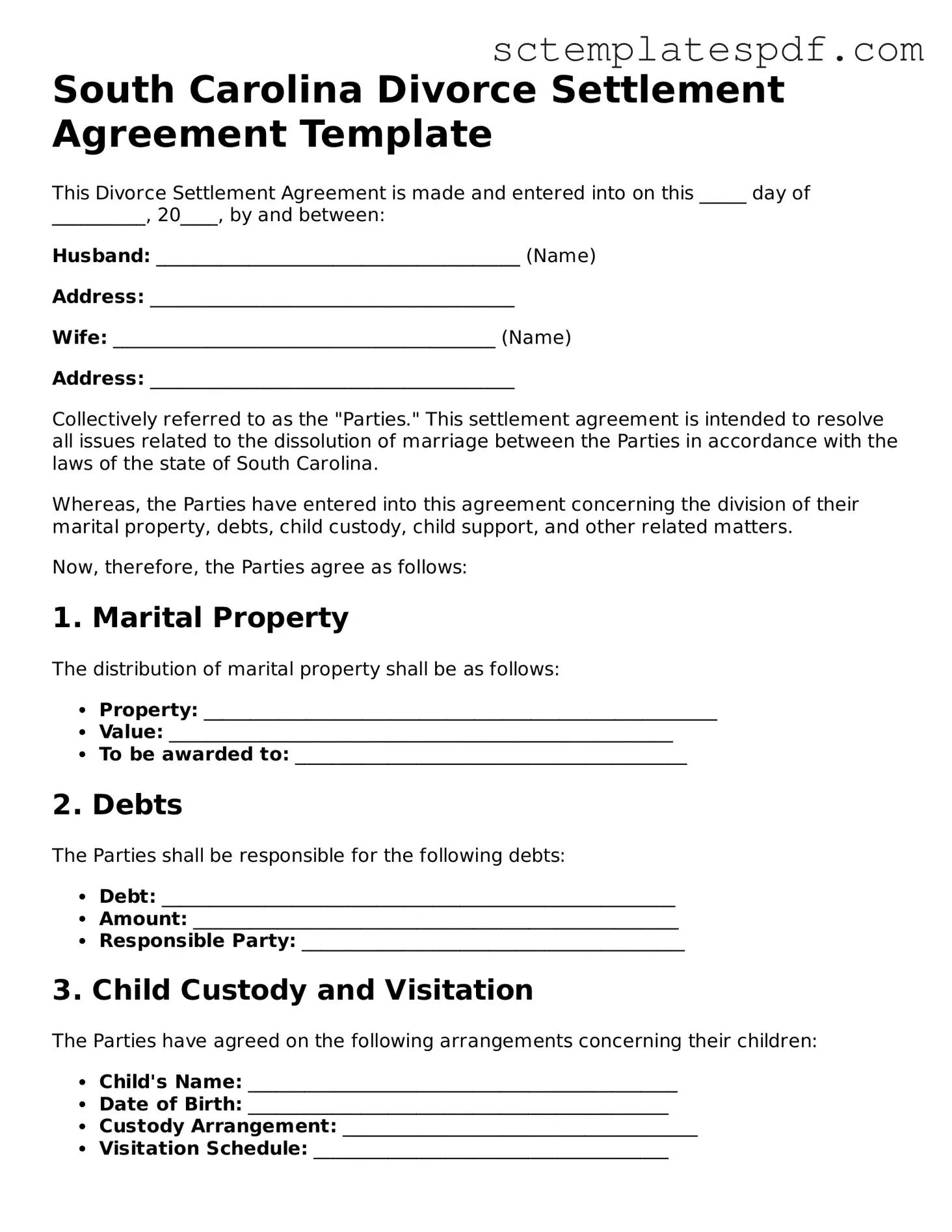Valid South Carolina Divorce Settlement Agreement Document
The South Carolina Divorce Settlement Agreement form is a crucial document that outlines the terms and conditions agreed upon by both parties during a divorce. This form addresses key issues such as asset division, child custody, and support arrangements, ensuring that both individuals have a clear understanding of their rights and responsibilities. To navigate this important process smoothly, consider filling out the form by clicking the button below.
Fill Out Your Divorce Settlement Agreement
